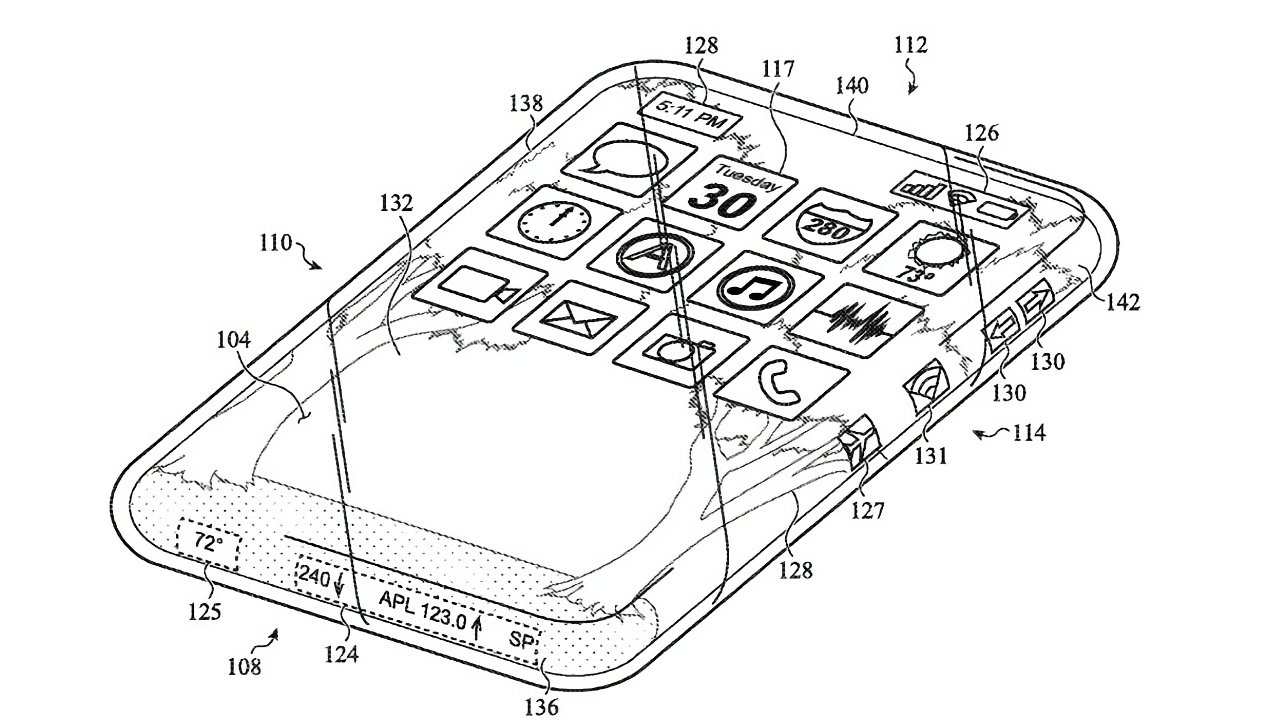Apple doubles down on all-glass iPhone with wraparound touchscreen
A new patent application is a rehash of older ones, and shows that Apple has not let go of the all-glass iPhone.

Every side of this proposed iPhone could display information or be tapped for controls -- image credit: Apple
, Apple applied for a patent on what it called "Electronic Device with Glass Enclosure," specifically an iPhone with "a six-sided glass enclosure." It proposed every surface of the iPhone being potentially able to receive touch and respond by launching apps, or displaying information. Now a patent with the same name has been applied for again.
This latest version of "Electronic Device with Glass Enclosure" further reveals that Apple has been pursuing this idea since at least August 2018. There was significant development in a 2019 version but this latest one appears to be the same as a 2020 edition.
So Apple is at least clearly keeping the idea alive, but it may also be zeroing in one what it wants to achieve with this idea of an all-glass iPhone.
That idea, though, extends beyond just what materials are used for the iPhone. The iPhone 4 and iPhone 4S both had glass backs, and of course glass on the front. This is more than just adding glass to the sides and smoothing over the joins to "appear visually and tactilely seamless," and making it seem to "be formed from a single piece of glass."
Instead, the proposal wants to do away with the idea of what is the right way to hold an iPhone -- and to add in features such as the ability to squeeze the device to, perhaps, cancel a call.
"Enclosures having glass defining multiple sides of the enclosure may facilitate or enable numerous additional functions and uses that are not realized with conventional enclosures," says the patent application. "For example, glass backs and glass sides may be transparent, allowing the electronic device to include additional displays that are viewable through the sides and/or the back."

Notice the information on the bottom edge: all parts of this iPhone would usable -- image credit: Apple
"Moreover, the side- and back-viewable displays may be made touch and/or force sensitive using touch- and/or force-sensing systems,," it continues, "effectively turning the side and back surfaces into additional input devices or surfaces with which a user may interact to control the electronic device."
This also fits with Apple's reportedly long-standing ambition to replace all iPhone physical buttons with solid state ones -- regions that can be pressed and give haptic feedback, but are not actually buttons. For with an apparently single piece of glass wrapped around the device and touchable, tappable, and even squeezable, there may be no need for physical buttons.
There also wouldn't be a reason to hold the iPhone a certain way -- drawings in the patent show the familiar homescreen rotating as the device does. It would be like the way an iPad rotates its homescreen, but an iPhone currently doesn't.
As spotted by 9to5 Mac, those patent application drawings also show wallpaper stretching out across all sides of the device, both the front and back, plus what Apple calls "peripheral sides."
"[Multiple glass sides] may display graphical outputs (e.g., images, videos, etc.) that span multiple displays and sides of the device," says Apple. "For example, a single displayed graphical output (e.g., image, user interface, etc.) may wrap or extend over a front side, one or more peripheral sides, and a back side of the device, thus contributing to the unified appearance of the multiple sides.
With the sides being at least partly touch-enabled, "icons [may be allowed] to move across multiple surfaces when swiped, and may even... appear as a ribbon-like user interface that wraps around the device," continues Apple.
This latest version remains credited to the inventors of the 2020 edition, Christopher D. Prest and Peter N. Russell-Clarke. Together they have over 160 previous patents, which include ones concerning glass housing and fastenings.
Read on AppleInsider

Comments